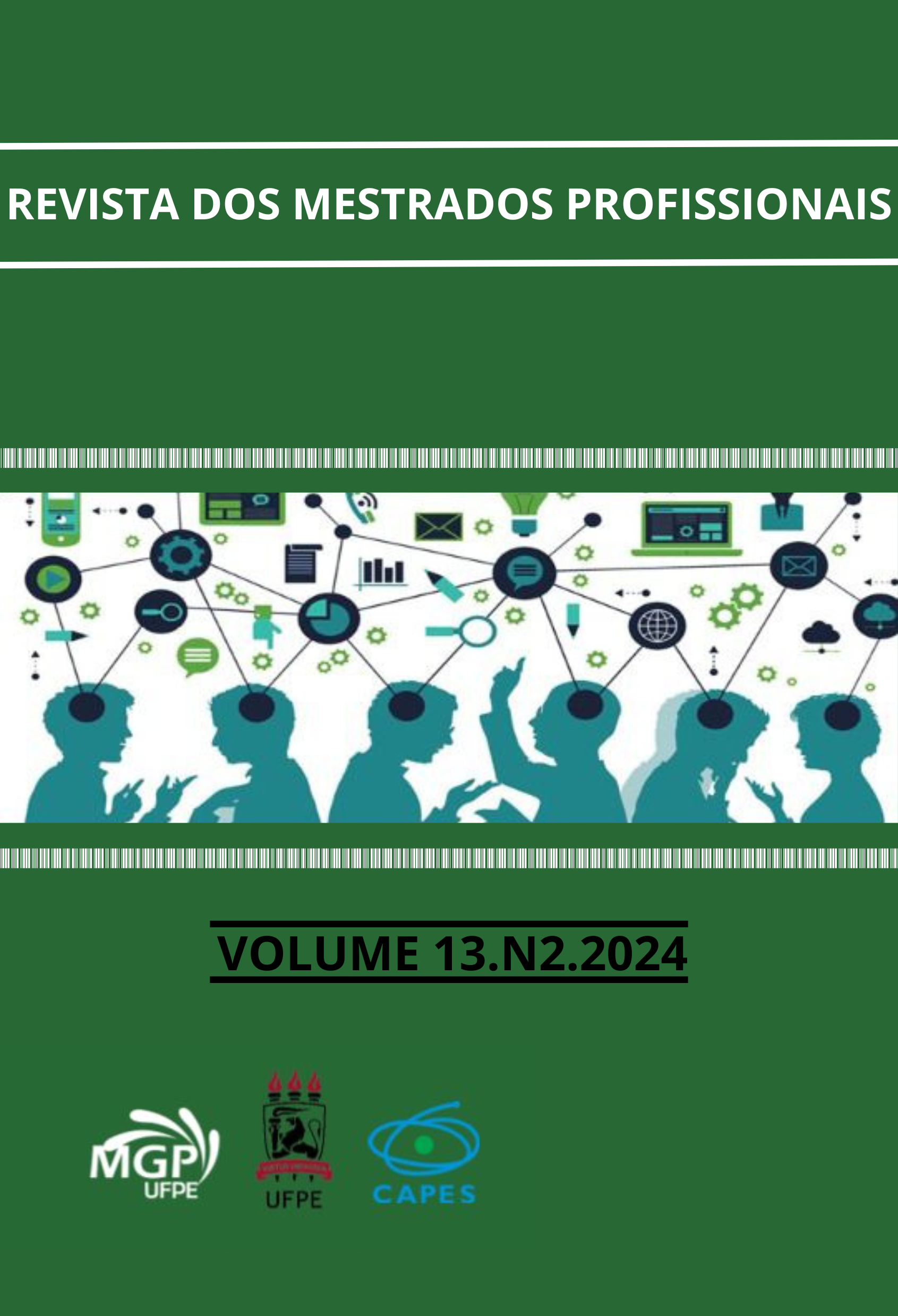Desenvolvimento de algoritmo baseado em meta-aprendizagem para classificar famílias de plantas daninhas tóxicas ao gado.
DOI :
https://doi.org/10.51359/2317-0115.2024.265322Mots-clés :
CNN, erva daninha, pastagem, segementação semântica, droneRésumé
Este trabalho propõe um algoritmo de segmentação semântica baseado em Redes Neurais Convolucionais (RNC) para classificar plantas daninhas das famílias Amaranthaceae, Boraginaceae e Plantaginaceae, que são tóxicas para o gado. A identificação precisa dessas plantas é crucial para um controle eficaz. Para o desenvolvimento do algoritmo, foi coletado um conjunto de imagens de ervas daninhas em diversos cenários, como pastagens, plantações de cana-de-açúcar e outras culturas. As imagens foram normalizadas para um tamanho padrão de 704x1056 pixels. O algoritmo utilizou técnicas de meta-aprendizagem, como MAML, e o EfficientNet-B0, um extrator de características pré-treinado, em uma arquitetura de Rede Piramidal de Características (FPN) para segmentação semântica. A métrica Intersection over Union (IoU), também conhecida como mIoU, foi utilizada para avaliar o desempenho do modelo. Durante o treinamento, o modelo alcançou uma perda de 0,007, mIoU de 0,887 e acurácia de 0,998. Na validação, os resultados foram uma perda de 0,034, mIoU de 0,868 e acurácia de 0,988, demonstrando a eficiência e o alto desempenho do algoritmo proposto.
Références
BERNARDINO DE CARVALHO, T.; DE ZEN, S. A cadeia de Pecuária de Corte no Brasil: evolução e tendências. Revista IPecege, [S. l.], v. 3, n. 1, p. 85–99, 2017. DOI: 10.22167/r.ipecege.2017.1.85. Disponível em: https://ipecege.emnuvens.com.br/Revista/article/view/109. Acesso em: 23 ago. 2023.
BURKE, M.; DRISCOLL, A.; LOBELL, D.B.; ERMON, S. Using satellite imagery to understand and promote sustainable development. Science, v. 371, eabe8628, 2021.
CASTRO, W.; MARCATO JUNIOR, J.; POLIDORO, C.; OSCO, L. P.; GONÇALVES, W.; RODRIGUES, L.; SANTOS, M.; JANK, L.;
BARRIOS, S.; VALLE, C.; SIMEÃO, R.; CARROMEU, C.; SILVEIRA, E.; JORGE, L. A. C.; MATSUBARA, E. Deep Learning Applied to Phenotyping of Biomass in Forages with UAV-Based RGB Imagery. Sensors, v. 20, 4802, 2020.
CHAGNON, M.; KREUTZWEISER, D.; MITCHELL, E. A. D.; MORRISSEY, C. A.; NOOME, D. A.; VAN DER SLUIJS, J. P., et al. Risks of large-scale use of systemic insecticides to ecosystem functioning and services. Environmental Science and Pollution Research, v. 22, p. 119–134, 2015. doi: 10.1007/s11356-014-3277-x.
DELCOUR, I.; SPANOGHE, P.; UYTTENDAELE, M. Literature review: impact of climate change on pesticide use. Food Research International, v. 68, p. 7–15, 2015. doi: 10.1016/j.foodres.2014.09.030.
ELHARROUSS, O.; AKBARI, Y.; ALMAADEED, N.; AL-MAADEED, S. Backbones-Review: Feature Extraction Networks for Deep Learning and Deep Reinforcement Learning Approaches. arXiv preprint arXiv:2206.08016v1, 2022. Disponível em: https://arxiv.org/abs/2206.08016. Acesso em: 07/10/2024.
FARIA, Lilian Nogueira de. Redes neurais de segmentação semântica de plantas daninhas usando mosaico de imagens de alta resolução espacial de um veículo aéreo não tripulado. 2023. Tese (Doutorado em Ciência da Computação) - Instituto de Matemática e Estatística, University of São Paulo, São Paulo, 2023. doi:10.11606/T.45.2023.tde-22012024-083633. Acesso em: 2024-10-12.
FERREIRA, D. de J., electrónica, A. de M. Z.-REDVET. R., & 2007, undefined. (2007). Importância da pastagem cultivada na produção da pecuária de corte brasileira. Redalyc.Org, 3. https://www.redalyc.org/pdf/636/63613302002.pdf
GARNETT, T.; APPLEBY, M. C.; BALMFORD, A.; BATEMAN, I. J.; BENTON, T. G.; BLOOMER, P., et al. Sustainable intensification in agriculture: premises and policies. Science, v. 341, p. 33–34, 2013. doi: 10.1126/science.1234485.
KAMILARIS, A.; PRENAFETA-BOLDÚ, F.X. Deep learning in agriculture: A survey. Computers and Electronics in Agriculture, v. 147, p. 70–90, 2018.
LIN, T.-Y.; DOLLÁR, P.; GIRSHICK, R.; HE, K.; HARIHARAN, B.; BELONGIE, S. Feature Pyramid Networks for Object Detection. In: Proceedings of the IEEE Conference on Computer Vision and Pattern Recognition (CVPR), p. 2117-2125, 2017. Disponível em: https://openaccess.thecvf.com/content_cvpr_2017/html/Lin_Feature_Pyramid_Networks_CVPR_2017_paper.html.
MA, C.; ZHANG, H.H.; WANG, X.F. Machine learning for big data analytics in plants. Trends in Plant Science, v. 19, p. 798–808, 2014.
MA, L.; LIU, Y.; ZHANG, X.L.; YE, Y.X.; YIN, G.F.; JOHNSON, B.A. Deep learning in remote sensing applications: A meta-analysis and review. ISPRS Journal of Photogrammetry, v. 152, p. 166–177, 2019.
MAES, W.H.; STEPPE, K. Perspectives for remote sensing with unmanned aerial vehicles in precision agriculture. Trends in Plant Science, v. 24, p. 152–164, 2019.
NATARAJAN, V. A.; KUMAR, M. S.; PATAN, R.; KALLAM, S. AND MOHAMED, M. Y. N., "Segmentation of Nuclei in Histopathology images using Fully Convolutional Deep Neural Architecture," 2020 International Conference on Computing and Information Technology (ICCIT-1441), Tabuk, Saudi Arabia, pp. 319-325, 2020.
RONNEBERGER, O., FISCHER, P., & BROX, T. (2015). U-Net: Convolutional Networks for Biomedical Image Segmentation. In Medical Image Computing and Computer-Assisted Intervention – MICCAI 2015 (pp. 234-241). Springer, Cham. https://doi.org/10.1007/978-3-319-24574-4_28
SANTORO, A.; BARTUNOV, S.; BOTVINICK, M.; WIERSTRA, D.; LILLICRAP, T. P. Meta-learning with memory-augmented neural networks. In: Proceedings of the 33rd International Conference on International Conference on Machine Learning, v. 48, p. 1842–1850, 2016.
Vougioukas, S.G. Agricultural robotics. Annu. Rev. Control Robot. Auton. Syst. 2019, 2, 365392.
WANG, H.; SHANG, S.; WANG, D.; HE, X.; FENG, K.; ZHU, H. Plant Disease Detection and Classification Method Based on the Optimized Lightweight YOLOv5 Model. Agriculture. 2022, 12, 931.
ZHANG, Z., LI, Y., ZHANG, W., XU, J., GU, H., AND QI, Q. (2011). Discuss on the ecological irrigation district and ecological irrigation district health, in Proceedings of 2011 International Symposium on Water Resource and Environmental Protection (Xian), 489493.
ZHONG, L.H.; HU, L.; ZHOU, H. Deep learning based multi-temporal crop classification. Remote Sens. Environ. 2019, 221, 430443.
Téléchargements
Publiée
Numéro
Rubrique
Licence
© As Pesssoas Autoras 2025

Ce travail est disponible sous licence Creative Commons Attribution - Pas d'Utilisation Commerciale - Pas de Modification 4.0 International.
Os trabalhos submetidos são de responsabilidade exclusiva de sua autoria, que preserva o seu direito autoral.
É permitida a citação dos trabalhos publicados sem prévia autorização desde que seja explícita a menção à fonte da RMP

